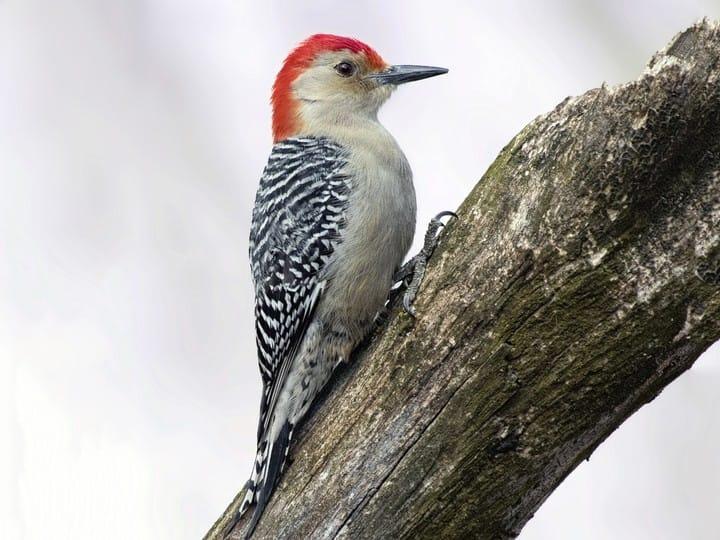Discovering Woodpeckers in Florida Habitats: Where to Identify These Birds
Discovering Woodpeckers in Florida Habitats: Where to Identify These Birds
Blog Article
Woodpeckers: A Comprehensive Overview to Recognizing These One-of-a-kind Birds
Woodpeckers, with their unique actions and physical attributes, have long mesmerized the curiosity of ornithologists and nature lovers alike. As we discover the elaborate makeup, diverse varieties, and ecological value of woodpeckers, a deeper recognition for these unique birds and the secrets they hold unravels.

Woodpeckers' Drumming Behavior
Woodpeckers exhibit a rhythmic and specific drumming actions that offers different vital functions in their daily lives. This actions is mostly connected with communication, territory defense, and foraging. The distinct drumming audio is produced by the rapid pecking of their beaks against tough surface areas such as tree trunks, branches, or also metal objects.
Interaction is a critical element of woodpecker habits, and drumming plays a significant duty in this procedure. Woodpeckers utilize drumming to establish their visibility, draw in mates, and maintain call with their partners and spawn. The frequency, strength, and period of drumming sequences share certain messages to other woodpeckers in the location.
Along with communication, woodpeckers make use of drumming habits for territory protection. Woodpeckers in Florida. The loud and repeated drumming functions as an advising to prospective intruders, signifying that the area is currently declared. By establishing their region through drumming, woodpeckers lower the probability of conflicts over useful resources such as food and nesting websites
Moreover, woodpeckers additionally utilize drumming as a foraging technique. The balanced pecking helps them find pests hiding under the bark of trees by creating resonances that disrupt the target's cover-up. This actions showcases the adaptability and ingenuity of woodpeckers in using their drumming skills for numerous important functions.
Unique Adaptations for Tree Climbing
Having actually mastered the art of drumming to communicate, safeguard territory, and forage, woodpeckers have advanced unique adaptations that promote their remarkable climbing capacities in their arboreal environments. One essential adjustment is their customized feet. Woodpeckers have zygodactyl feet, with two toes directing ahead and 2 toes aiming backward. This plan supplies a solid grip on the vertical surfaces of trees, enabling them to stick effortlessly while foraging for bugs or drumming. In addition, woodpeckers possess stiff tail plumes that act as a prop to support their bodies as they climb up. These tail feathers supply stability and equilibrium, allowing woodpeckers to navigate up tree trunks with precision and agility.
Moreover, woodpeckers have powerful neck muscle mass and a special skull structure that aid in their climbing up capacities. Their solid neck muscular tissues enable them to quickly peck at tree bark without experiencing whiplash, while their thick skull and tiny mind function as shock absorbers, securing them from the effect of repeated drumming. These adjustments jointly allow woodpeckers to navigate the upright globe of trees with effectiveness and grace.

Function of Woodpeckers in Ecological Communities
By foraging for pests under the bark of trees, woodpeckers aid manage parasite populaces, protecting against outbreaks that could harm the overall health of the forest. Furthermore, woodpeckers produce dental caries in trees that offer as crucial nesting sites for a variety of other bird varieties, advertising biodiversity within the environment.
Furthermore, the drumming and articulations of woodpeckers play a vital role in communication and territory facility. These audios not just serve to attract mates yet additionally assist define boundaries between various woodpecker areas, minimizing disputes and promoting an unified conjunction within the forest area. On the whole, the visibility of woodpeckers in forest environments highlights their significance as keystone species, affecting the dynamics and functioning of these environments in diverse ways.
Composition: Specialized Beaks and Feet
In the detailed web of woodland environments, the specialized beaks and feet of woodpeckers are essential adjustments that allow them to fulfill their essential eco-friendly roles. Woodpeckers possess one-of-a-kind anatomical functions that are especially developed to assist them in their foraging and nesting behaviors.
The most distinguishing characteristic of woodpeckers is their strong, chisel-shaped beaks. These beaks are flawlessly adapted for boring right into timber to uncover bugs, larvae, and sap concealed beneath the bark of trees. The strong muscle mass and tough structure of their beaks allow woodpeckers to peck at a price of approximately 20 times per second without causing damage to their skulls.
Furthermore, woodpeckers have actually specialized feet that help in their acrobatic climbing abilities. Their feet have two toes directing onward and 2 toes pointing backward, offering a solid hold on upright surface areas (Woodpeckers in Florida). This one-of-a-kind foot arrangement, along with stiff tail feathers that function as a helpful prop, permits woodpeckers to stick to tree trunks and branches with convenience while they search for food or excavate nesting cavities
Woodpecker Species Diversity
Woodpeckers are a varied team of birds found across numerous environments worldwide, with over 200 recognized species showing adjustments to different settings. Woodpeckers have evolved to inhabit an array of atmospheres, from woodlands and forests to grasslands and deserts, each providing one-of-a-kind obstacles that have affected the visit this website evolution of unique woodpecker varieties.
These adjustments enable woodpeckers to forage successfully in their corresponding habitats, minimizing competitors amongst species and advertising particular niche differentiation. In addition, geographic seclusion and historical factors have actually played a role in forming the circulation and diversity of woodpecker species, leading to the large array of specialized adaptations seen in these interesting birds.

Conclusion
To conclude, woodpeckers are fascinating birds that display distinct drumming habits, specialized adjustments for tree climbing, and play essential duties in ecosystems. Their composition, including specialized beaks and feet, allows them to prosper in their atmosphere. With a varied variety of woodpecker varieties found worldwide, these birds are vital for keeping the health and wellness and balance of forests and woodlands. Understanding site web and appreciating the intricacies of woodpeckers can offer useful understandings right into the natural world. click for info
Report this page